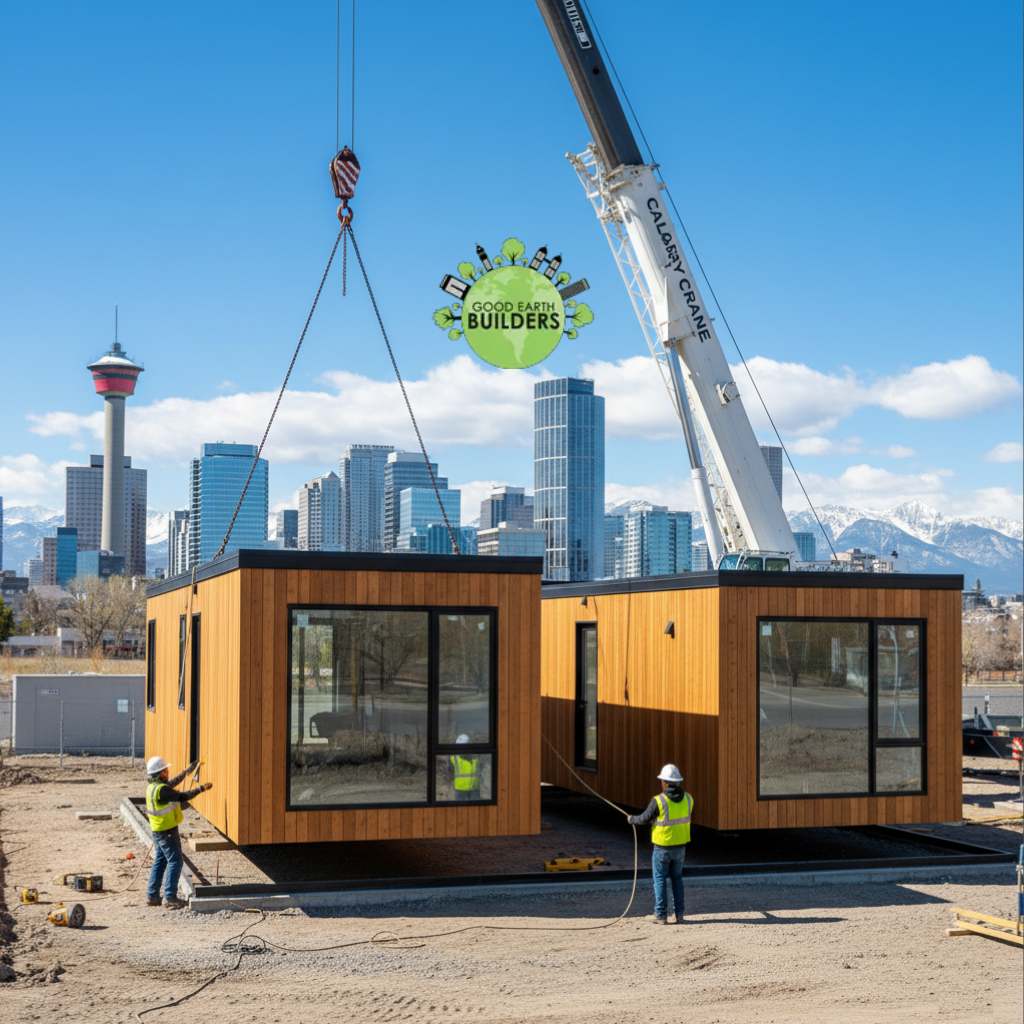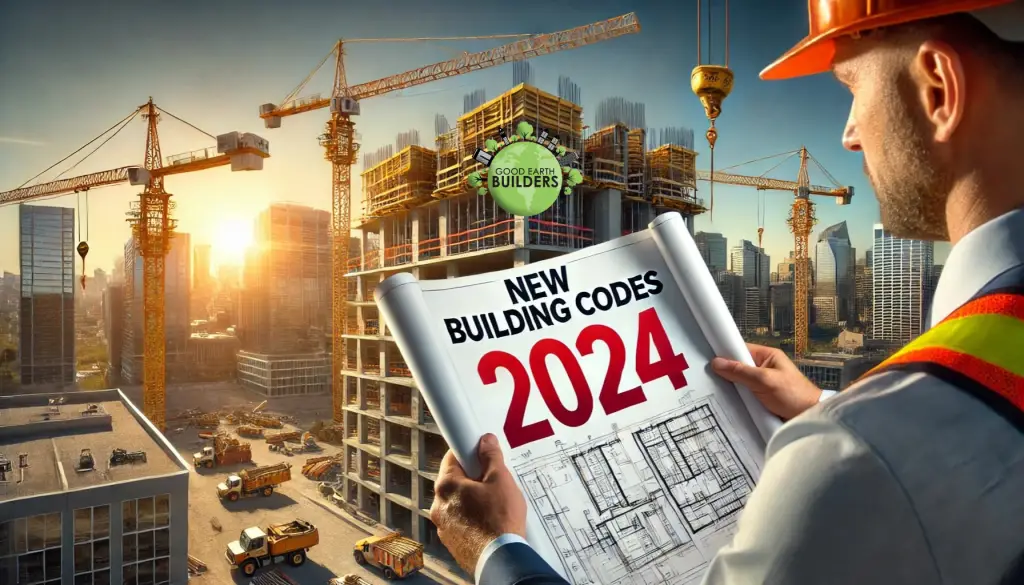Monday, October 20, 2025
The way Calgarians build their homes is changing. For decades, the image of new construction meant crews working for months on-site, battling chinooks, sudden snow, and the relentless pressure of escalating costs. But today, a smarter, faster, and more predictable method has moved from the margins to the mainstream: modular construction.
Far from the “trailer” stereotype of the past, modern modular homes are a high-tech, precision-engineered building solution perfectly suited to the unique demands of the Calgary market. They are proving to be the answer to the city’s need for efficiency, quality, and a fixed budget in an increasingly complex housing landscape.
This in-depth look explores the core reasons why modular homes have surged in popularity, becoming a preferred choice for savvy homebuyers, infill developers, and anyone seeking a better building experience.
1. Speed and Schedule Certainty: The Calgary Time Factor ⏱️
One of the most immediate and compelling advantages of modular building is the drastically reduced construction timeline, a benefit that translates directly into significant cost savings and reduced stress for the homeowner.
Parallel Processing: A Two-Front Build
In traditional “stick-built” construction, every step must happen sequentially. You can’t start framing the walls until the foundation is cured, and you can’t install finishes until the structure is weather-tight. This linear process is slow.
Modular construction is different because it uses a parallel process.
- Off-Site Manufacturing: While the modules of your home are being built simultaneously in a climate-controlled factory, the necessary site work—excavation, foundation, utilities, and servicing—is being completed on your lot in Calgary.
- Weather Immunity: This is a massive advantage in Alberta. Because 80% to 90% of the home is built indoors, materials like lumber and drywall are never exposed to snow, rain, or extreme cold. This eliminates weather delays, which can easily add weeks or months to a traditional project, especially during the harsh Calgary winter.
- Rapid Assembly (The “Crane Day”): Once the foundation is ready and the modules are complete, they are transported to the site. The assembly, or “crane day,” is often a stunning spectacle, with the entire structure being lifted and set onto the foundation in a single day. The final on-site work (joining the sections, utilities hookups, and exterior finishing) can often be completed in a fraction of the time a traditional build takes.
The Bottom Line: A modular home can often be completed and ready for occupancy in half the time of a conventional build. This accelerated timeline means less time paying construction loan interest, less time paying rent, and a quicker return on your investment.
2. Cost Predictability and Financial Stability 💰
In an era of volatile material costs and unpredictable labour shortages, financial certainty is a premium commodity in construction. Modular homes deliver this stability through a predictable, factory-based model.
Fixed-Price Budgeting
Traditional construction budgets are notorious for unexpected cost overruns, often caused by site issues, material theft, subcontractor delays, and price changes. Modular builders, operating under the principles of advanced manufacturing, can offer far more predictable, fixed pricing early in the process.
- Bulk Purchasing Power: Modular manufacturers build homes year-round in high volume. They buy materials—lumber, shingles, windows, and fixtures—in bulk, securing discounted pricing and locking in material costs well in advance. These savings are passed on to the consumer.
- Waste Reduction: In a factory setting, every piece of material is cut using precision jigs and software-driven systems. This assembly-line efficiency drastically reduces material waste (up to 70% less than traditional construction), lowering overall material expenditure.
- Reduced Site Overhead: Shorter project timelines mean reduced costs for on-site management, temporary utilities, security, and equipment rental.
The cost advantage means that while modular homes use the same high-quality materials as traditional homes, they are often available at a final, all-in price that is 10% to 20% lower per square foot than a comparable site-built home, offering superior value.
3. Quality, Durability, and Energy Efficiency ⭐
One of the greatest misconceptions about modular construction is that quality is sacrificed for speed. The reality is the opposite: the quality of a modern modular home often exceeds that of a traditional stick-built home.
Superior Factory-Controlled Quality
Every module is built indoors, ensuring the highest standards of workmanship:
- Precision and Consistency: Assembly-line production enforces quality control at every stage. Walls are perfectly square, corners are plumb, and measurements are exact because of the precision tools and computer-aided manufacturing (CAM) used.
- High-Strength Structure: Because modules must be robust enough to withstand being hoisted by a crane and transported over long distances, they are engineered with additional structural reinforcement at the joints. This makes the finished home inherently stronger and better equipped to handle severe weather events than a typical site-built structure.
Built for Alberta Efficiency and Comfort
The factory environment allows for the creation of an exceptionally high-performance building envelope, which is critical in Calgary’s climate.
- Airtightness: A controlled environment allows workers to meticulously apply sealants and caulk in areas that are inaccessible to on-site builders. The resulting superior airtightness minimizes uncontrolled air leakage, a major source of heat loss.
- Enhanced Insulation: Modular designs often integrate high-R-value insulation materials, like Structural Insulated Panels (SIPs) or high-density spray foam, with exceptional consistency. This superior insulation and sealing translate directly into lower annual utility bills (up to 45% less energy consumption in some cases) and a more comfortable, draft-free interior.
- Net-Zero Ready: Many modular builders can easily integrate advanced features like triple-pane windows, heat-recovery ventilators (HRVs), and solar power systems, making the path to a Net-Zero-Ready home more streamlined and affordable than with traditional construction.
4. Perfect for the Calgary Market: Infill and Climate Resilience 🏔️
Modular construction is uniquely suited to solve some of Calgary’s most pressing urban development and environmental challenges.
The Infill Advantage
Calgary’s inner-city neighbourhoods are seeing a surge in infill development—replacing older homes with modern, often higher-density structures like duplexes or carriage houses. Modular building is the perfect tool for this:
- Minimal Site Disruption: A major complaint during infill projects is the disruption to the neighbourhood from noise, dust, and continuous truck traffic. Because the bulk of the construction happens off-site, a modular build causes significantly less disruption, with only a few weeks of intensive on-site activity.
- Space Maximization: Modular designs are excellent for maximizing space on the city’s often smaller, tighter urban lots, providing modern, functional layouts that older homes lack.
Climate and Environmental Leadership
Modular construction is often the most environmentally friendly way to build.
- Zero Waste Goals: Factory recycling programs and precise material management can reduce landfill waste by as much as 90%.
- Reduced Carbon Footprint: Fewer trips to the site for material delivery and the efficient energy usage within the factory itself contribute to a lower overall carbon footprint for the construction process.
Customization and Modern Design
The “cookie-cutter” label is long dead. Modern modular homes are highly customizable. Homebuyers choose everything from the layout of the modules to the exterior finishes (siding, stone, stucco), kitchen cabinetry, flooring, and paint. You get the quality and efficiency of a factory build with the look and feel of a completely custom Calgary home.
5. From Concept to Reality: Building the Future in Calgary
Modular construction is no longer an alternative—it is fast becoming the intelligent standard for new construction in Calgary. It brings the precision and efficiency of modern manufacturing to an industry that desperately needs it, delivering homes that are faster to build, cheaper to operate, and superior in quality.
For a city that values progress, quality of life, and getting the most value for every dollar, the popularity of modular homes is simply a reflection of smart decision-making.
When you look for a modular builder in Calgary, you’re looking for a partner who understands both the precision of the factory and the specific needs of an Alberta home, from its structural strength to its energy performance in a severe climate.
🏗️ The Factory Advantage: Speed and Quality Control
One of the most compelling arguments for modular construction is the unmatched speed and efficiency of the build process. Unlike traditional construction, which can take 12 to 18 months or longer due to sequential on-site work, modular homes are built through a parallel process. While the factory constructs the modules indoors in a controlled environment, the site work—including foundation laying and utility hookups—occurs simultaneously. This concurrent workflow dramatically reduces the overall construction timeline, often allowing a project to be completed and ready for occupancy in as little as six to eight months. In the context of Calgary’s housing crisis, this rapid deployment is crucial for increasing housing supply at an accelerated pace, as demonstrated by local projects where multi-unit modular buildings were installed on-site in a matter of days.
Furthermore, the factory environment guarantees superior quality control. Materials are stored and assembled indoors, eliminating the risk of damage from Calgary’s unpredictable weather, such as moisture-related warping or mold growth in lumber. The construction process follows rigorous assembly-line principles and is subject to multiple internal and third-party inspections at every stage, resulting in a tighter, structurally stronger, and more uniform product. The modules are inherently over-engineered to withstand the stresses of transportation and craning, making them robust structures built to last.
💰 Long-Term Value and Energy Efficiency in the Alberta Climate
While initial perceptions may sometimes focus on the upfront cost, the long-term financial benefits of modular construction are significant, largely driven by superior energy efficiency and cost predictability. Modular builders benefit from bulk purchasing of materials and efficient factory operations, which can reduce material and labor waste, ultimately translating to a more competitive cost per square foot. Crucially, the short build time minimizes the period for construction financing interest, significantly reducing carrying costs for developers and homeowners.
For an Albertan climate characterized by extreme temperature swings, the inherent design of a modular home offers substantial operational savings. The factory-controlled setting ensures a very tight building envelope and superior airtightness, which drastically reduces air infiltration—a major cause of heat loss in traditional homes. Manufacturers often use techniques like 2×6 wall framing to allow for more insulation, enabling these homes to easily achieve demanding green standards like Net-Zero or Passive House certification. Over the lifetime of the home, this superior insulation and airtightness translate directly into lower heating and cooling costs and a smaller carbon footprint, providing both economic and environmental benefits to the homeowner.
🏘️ A Strategic Tool for Urban Infill and Density
Modular construction is an ideal fit for modern urban planning in Calgary, particularly in the realm of gentle density and infill development. Many older, established Calgary neighbourhoods are seeking to add density through projects like duplexes, row homes, or smaller multi-family units (like 4-plexes or 6-plexes) on existing lots. Modular units are perfectly suited for these scenarios because they minimize disruption to the existing neighbourhood. The majority of the work happens off-site, leading to a significantly shorter on-site construction phase, which means less noise, traffic, and general disturbance for neighbours compared to a multi-year traditional build.
The ability to build quickly and on challenging, smaller urban lots is a distinct advantage. By utilizing a “kit of parts” approach, builders can combine pre-designed modules in unique ways, offering significant customization potential to fit the specific constraints and aesthetic of an infill lot. This flexibility, coupled with the speed of delivery, makes modular construction a powerful and scalable strategy for municipalities seeking to efficiently increase diverse housing options within existing urban footprints.
Taking the Next Step with Experienced Local Builders
An experienced local builder specializing in modular construction understands the entire process—from zoning and permits in Calgary’s unique municipal environment to the final on-site connection. They manage the logistics of transport, craning, and final finishing, ensuring the seamless execution of a two-part build.
If you’re considering an infill project, a custom home, or a multi-family development in Calgary, finding a builder with a long track record of delivering high-quality, energy-efficient modular projects is essential.
The transition from a traditional to a streamlined, predictable building model is what sets the leading construction firms apart. Companies committed to this model, such as Good Earth Builders, emphasize this approach by integrating superior energy efficiency and quality control into their builds. Their focus on custom homes and multi-family infill developments, combined with a commitment to fast, predictable timelines, makes them a prime example of why modular construction is driving the future of home building across Calgary’s vibrant neighbourhoods. They demonstrate that you don’t have to compromise on speed, quality, or budget control when you choose the modular route.
For a visual overview of how these modules are transported and assembled on-site, check out this video: Journey of Usman Bashir | How Good Earth Builders Started
Journey of Usman Bashir | How Good Earth Builders Started – YouTube




